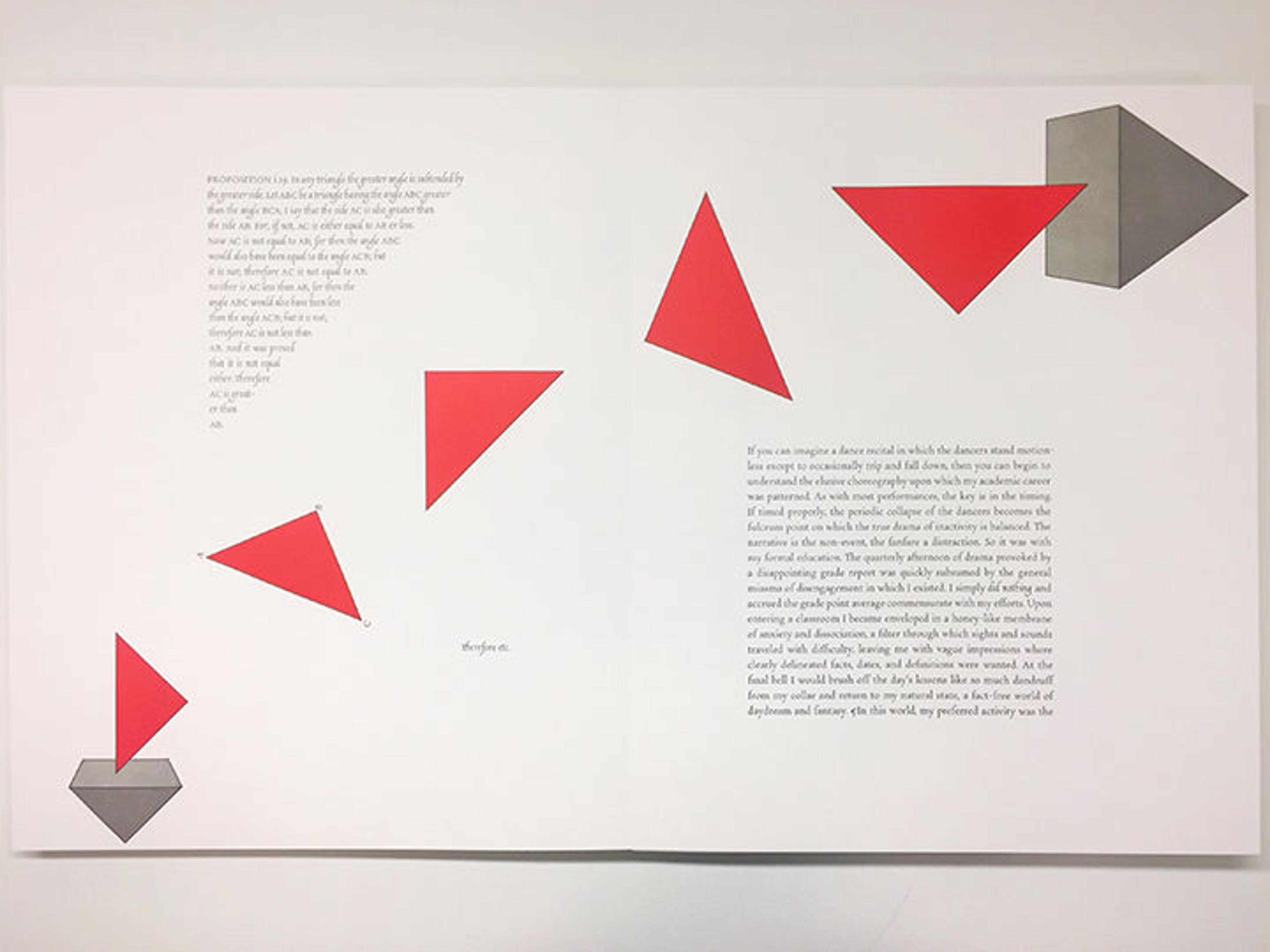
Russell Maret, Interstices & Intersections: Thirteen Euclidean Propositions (New York: printed by author, 2014).
«The advent of the printing press in 1450 helped usher in a new age of learning and culture by increasing the dissemination of knowledge. During the Renaissance, printing played a major role in the revival of classical languages, art, science, and math. Illustrating geometric forms in mathematical and architectural treatises became necessary, and as new technologies in printing evolved, so too did the complexity and style of the illustrations.»
Highlighted here are seven books with geometric illustrations from Watson Library, each from a different century and arranged chronologically, representing five different illustration techniques: woodcut, etching, copperplate engraving, lithography, and polymer plates.
1400: Woodcut

Vitruvius Pollio, Architectura Libri Decem (Venetii: Impressum Venetiis per Simonem Papiensem dictum Biuilaquam, 1497).
De Architectura was written by the Roman architect Marcus Vitruvius Pollio between 30 and 15 B.C. Drawing on a myriad of Greek and Roman writers, De Architectura is considered the only treatise on architecture to survive from antiquity. After being "rediscovered" in 1414 by Poggio Bracciolini, multiple editions came onto the market. This edition was printed by Simonem Papiensem (Simon Papien) in Venice in 1497, and included hardly any illustrations. Pictured here are some of the only illustrations in the book: somewhat crude woodcuts, the most commonly used print illustration technique available at that time.
1500: Woodcut

Giovanni Antonio Rusconi, Della Architettura (Venetia: Appresso i Gioliti, MDXC, [1590]).
In 1552, the Venetian architect Giovanni Antonio Rusconi came to believe there were errors in the many editions of De Architectura on the market, so made his own translation, complete with more than 300 supplementary illustrations. However, due to a market flooded with works on Vitruvius, Rusconi's editors never published the new translation. It was only after Rusconi's death in 1590 that Della Architectura was printed—by the son of Rusconi's late editor. Woodcuts had come a long way since the Simen Papien publication, and the advances in skill and technology—finer carved lines and more even inking on the printing press—are easy to see in these illustrations.
1600: Etching
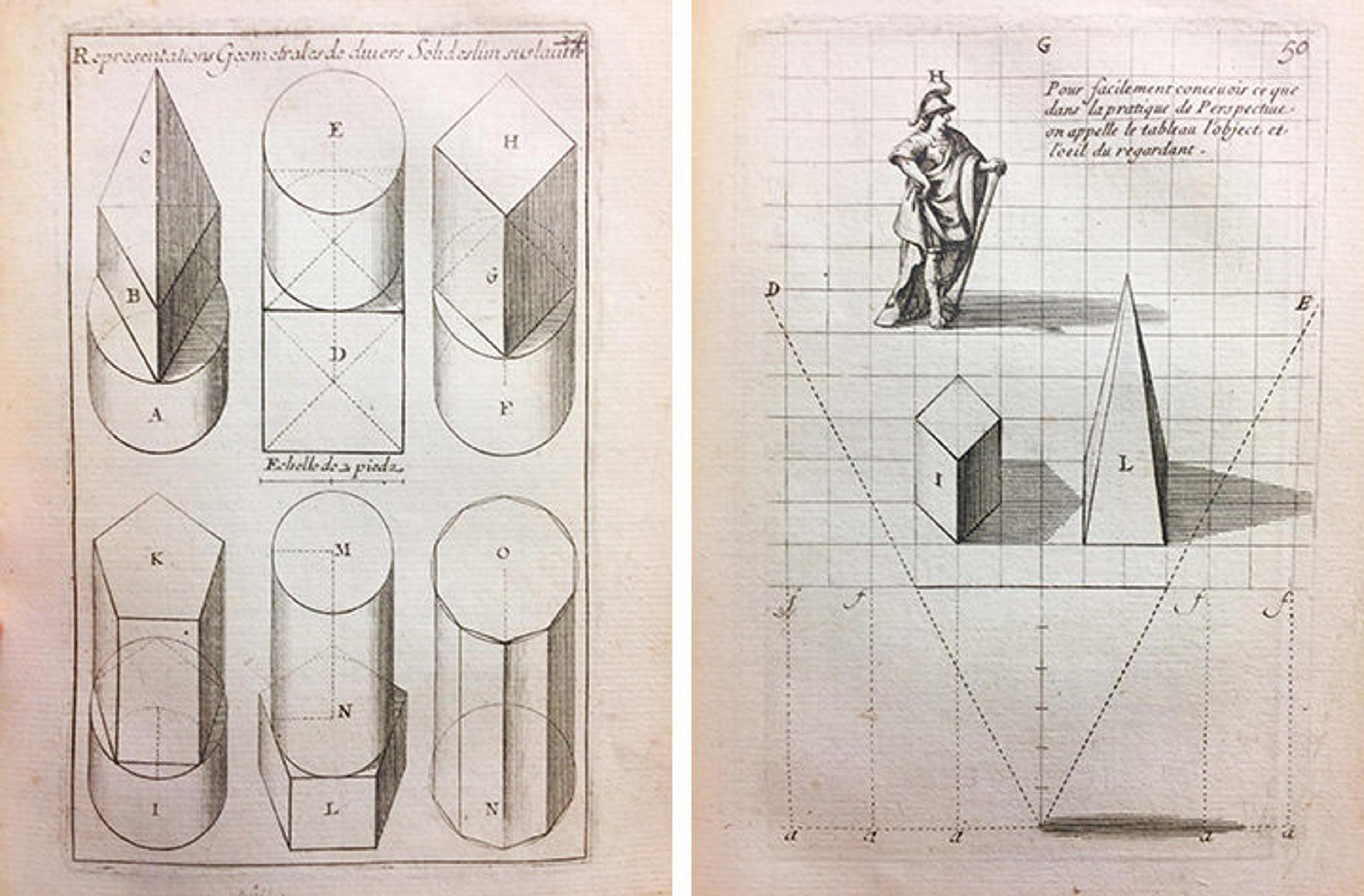
Abraham Bosse, Traité des Pratiques Geometrales et Perspectives: Enseignées dans l'Academie Royale de la Peinture et Sculpture (Paris: Chez l'auteur . . . , 1665).
Abraham Bosse was a French artist who worked mainly as an etcher for book illustrations. In 1641 he began taking architectural classes on perspective and eventually published several books in which he put his own spin on perspective in illustrations. Traité des Pratiques Geometrales et Perspectives was etched (in accordance with Bosse's favored style) in 1665. Etching consisted of dragging a sharpened metal point against a plate of metal covered with wax. The plate was then submerged in acid, which bit into the plate where the wax had been removed. Etching allowed for finer and more detailed lines than woodcuts did, but sacrificed smooth lines for speed as compared to engravings. Etchings can often be differentiated from engravings by a characteristic waver in the lines.
1700: Copperplate Engraving
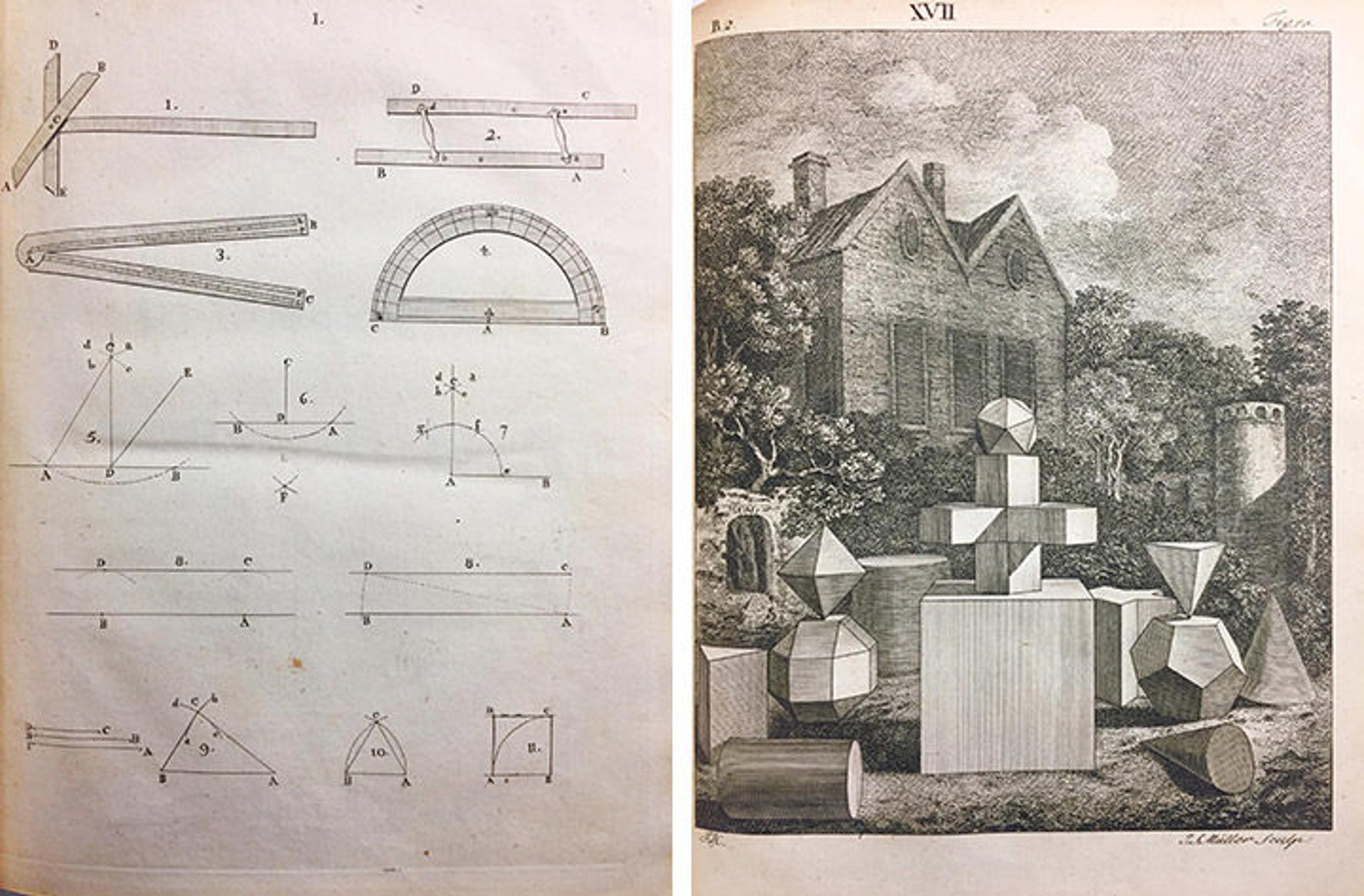
John Joshua Kirby, Dr. Brook Taylor's Method of Perspective Made Easy, Both in Theory and Practice (Ipswich: Printed by W. Craighton, for the author, 1755).
John Joshua Kirby was an English engraver who was particularly interested in perspective. He published and illustrated Dr. Brook Taylor's Method of Perspective Made Easy after reading Brook Taylor's mathematics works. The book was immensely popular. Copperplate engravings, where the lines are incised directly into copper, was an exact but physically demanding style of illustration. It resulted in extremely clear and fine lines, but since copper is a relatively soft metal, the plates could only stand so many impressions before the images began to degrade.
1800: Copperplate Engraving

Edward Shaw, Practical Masonry: Or a Theoretical and Operative Treatise of Building (Boston: Benjamin B. Mussey, 1846).
During the 1820s, steel replaced copper for many types of engraving: since it was a harder metal, many more impressions could be pulled from a plate without having to retouch it and finer lines could be achieved. However, copperplates continued to be used for many fine-art prints and book illustrations. Practical Masonry contains 44 copperplate engravings, but quite probably these copperplates would have received a coating of steel or nickel after being engraved, to extend the number of impressions. The engravings were sculpted by W. W. Wilson, of William W. Wilson Engraving and Printing. He was a banknote engraver and was arrested in 1853 for printing counterfeited banknotes.
1900: Lithography
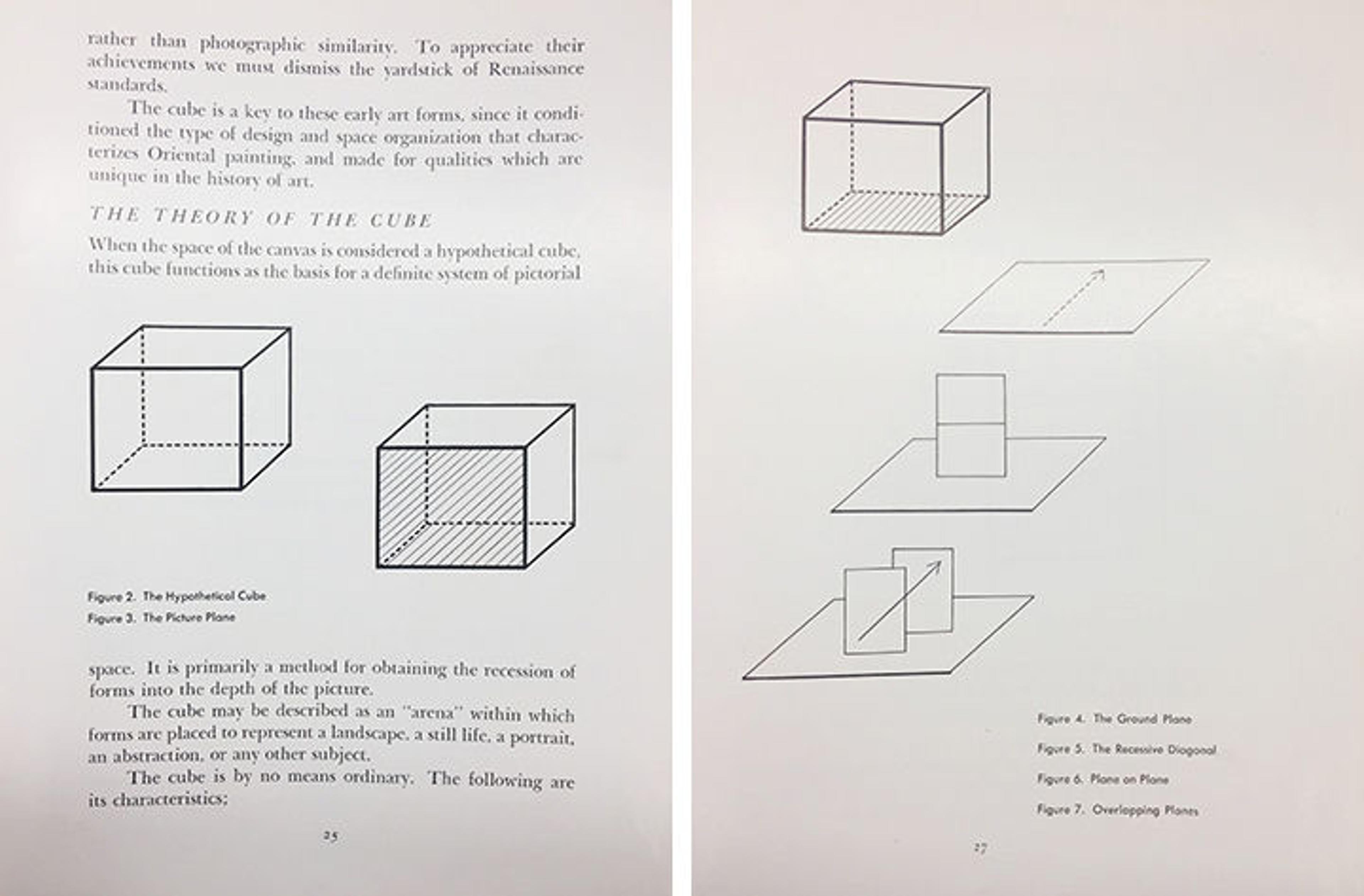
Aaron Berkman, Art and Space (New York: Social Sciences Publishers, [1949]).
Aaron Beckman's Art and Space used geometry to understand the act of visually looking at art and the role perspective and line played in understanding dimensions in art. These flat black lines would most likely have been printed on a lithographic stone. During the 20th century lithography became the predominant choice for book illustration and commercial printing. Lithographic stones didn’t wear down the way engraved plates could, and thus could make infinite prints.
2000: Polymer Plate
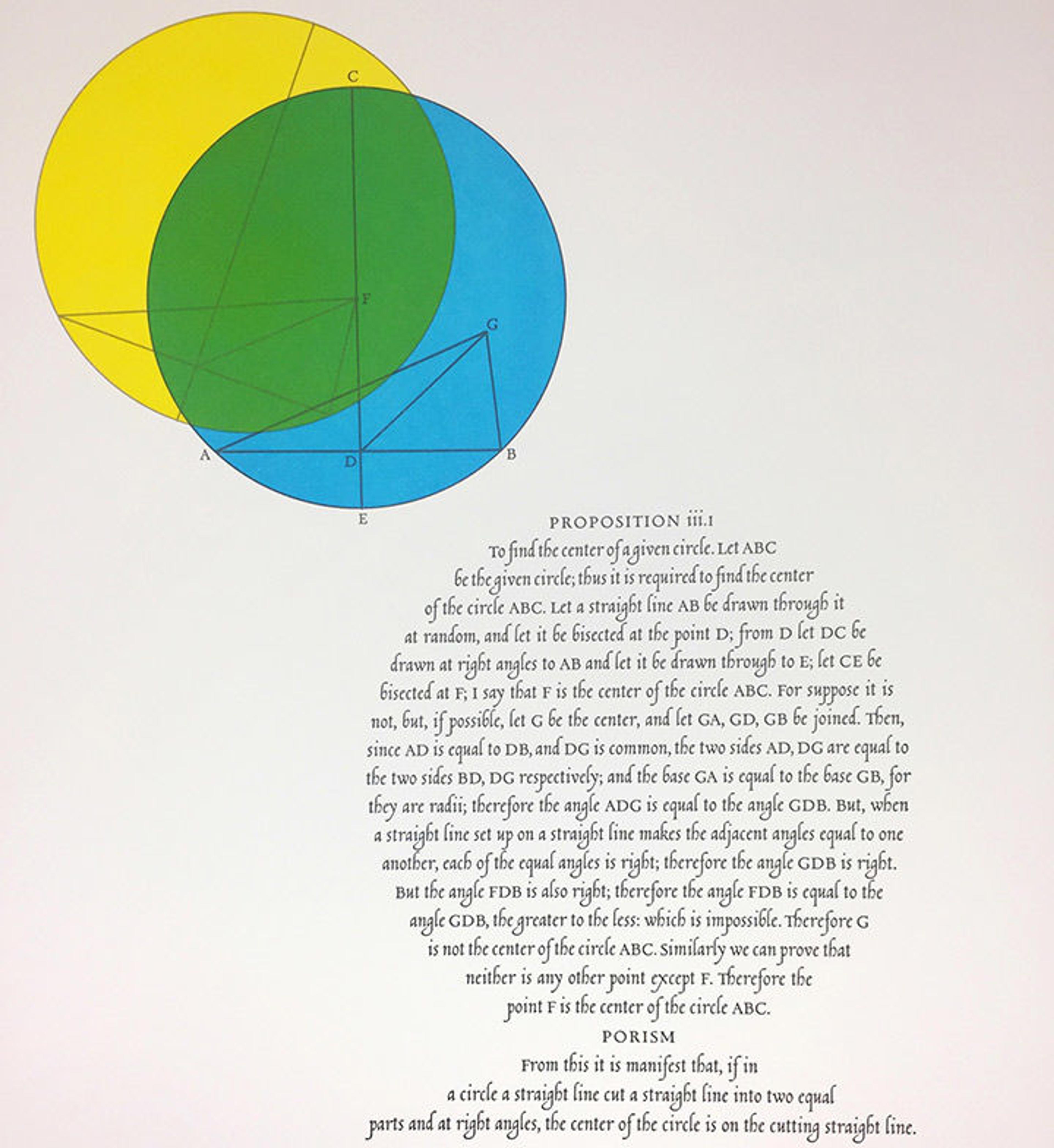
Russell Maret, Interstices & Intersections: Thirteen Euclidean Propositions (New York: printed by author, 2014).
Geometry continues to be of interest to artists and printers today. Interstices & Intersections: Thirteen Euclidean Propositions is an illustrated edition of Euclid's Elements of Geometry, combined with book artist Russell Maret's personal commentary on geometry and letterpress printing. Maret is an artist, printer, and typographer who used polymer plates and a letterpress printer to print this book. The exquisite color prints offer a more personal and artistic take on geometry and display printing at its best. Watson Library has several books by Maret, purchased with funds provided by the Friends of Thomas J. Watson Library.